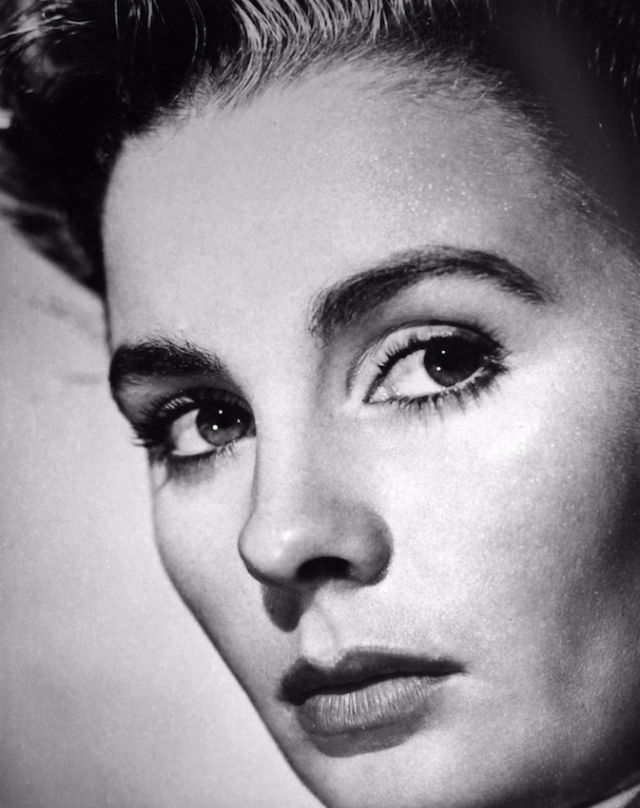In the golden age of Hollywood, when stars shone brighter than ever, one man stood behind the lens, crafting timeless portraits that immortalized their beauty and allure. Cornel Lucas, a pioneering photographer, left an indelible mark on the world of film portraiture during the 1940s and 1950s.
Born in Highbury, London, Lucas was driven from a young age. His elder brother’s gift of a camera sparked his passion, and his six sisters became his first subjects. After honing his skills in a film processing laboratory, Lucas went on to study photography at the Polytechnic School of Art, setting the stage for his remarkable career.
Lucas was widely recognized as one of the world’s leading film portrait photographers, capturing the essence of the great and the good from both sides of the Atlantic. In an era before digital manipulation, he relied solely on the power of light, shade, and his trusty 10-inch by 12-inch plate camera to create stunning, richly detailed portraits.
Greatly influenced by the cinematic masters of his time, Lucas sought to bring out the splendor and sensuality of his subjects. “It could take three hours to get the lighting right,” he recalled, “but after that, I could make my subject younger than a plastic surgeon could.” This meticulous approach allowed him to imbue his portraits with a sense of life and luminosity that was truly captivating.
#1 Marlene Dietrich, 1948
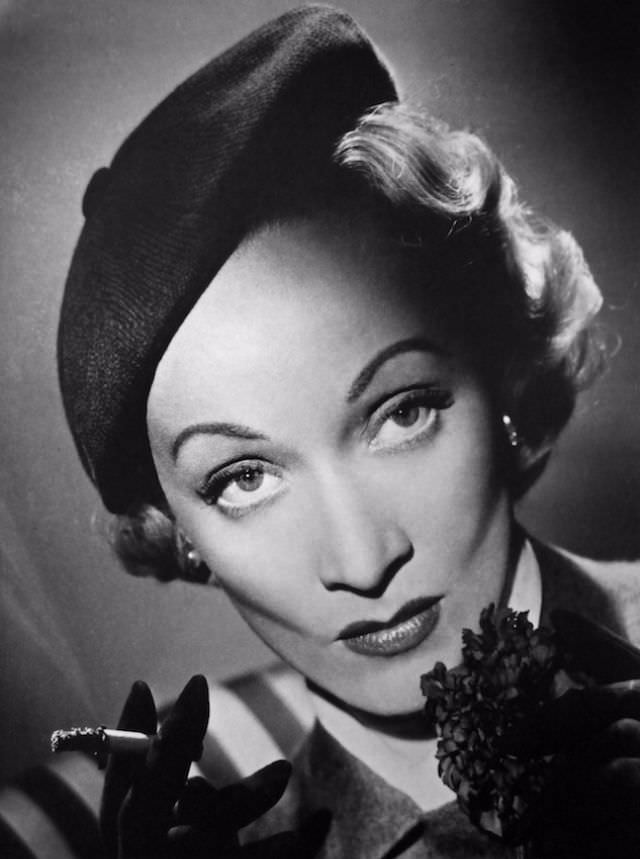
"I first had the opportunity to photograph Marlene Dietrich whilst working at Denham Studios. I rushed into the studio and was given a set on a small corner of an enormous 120 ft. by 80 ft. stage. I was nervous. Once set up, I waited in the dark, with my radio at the ready thinking it might help ease the situation and, more importantly, calm my nerves. Suddenly a light came on in the entrance to the studio a hundred feet away, and she and her entourage proceeded across the stage. I only took five photographs of her that day. The shoot finished and she announced she would be back the next day to see the rough prints. I re-touched the prints following her explicit and detailed instructions to a tee. The next day Dietrich arrived, took out her magnifying glass again and re-examined the prints. Pleased, she turned to me, shook my hand and said, 'Join the club Mr. Lucas.' I was rather perplexed and wasn't sure what she meant so asked her publicist what she had implied. He simply sad 'Mr. Lucas it means, you’re on the road to success.' And I was!"
#2 Katherine Hepburn, 1950
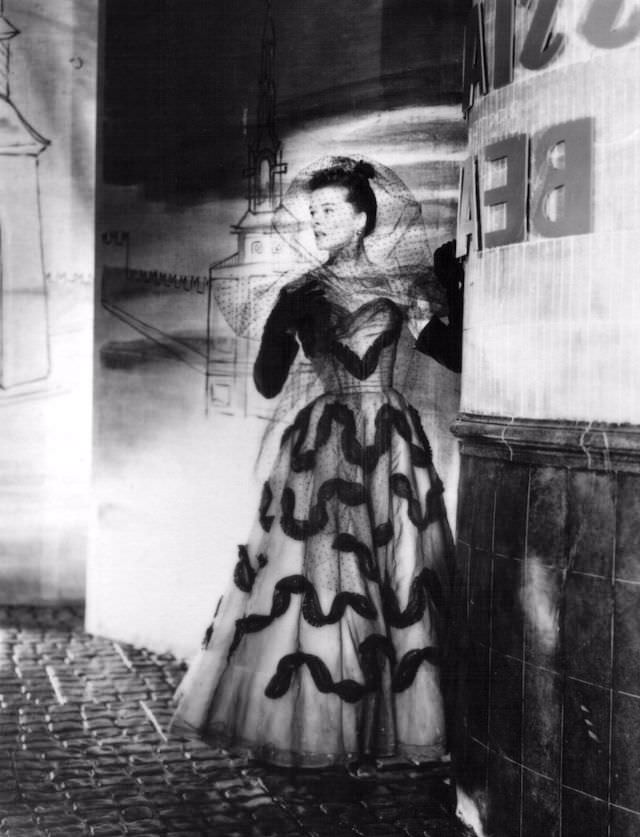
"When I was asked to photograph Hepburn, she told me, 'Cornel, I don’t want to be photographed in the studio. I’ve been shot all my life in the studio, I’d prefer it if you just follow me around and take pictures as you like.' We spent the whole day together. Every time I saw a moment to capture from my position in the background, I’d nod at the electrician above who would shed light on to her and then I could shoot away. After a few days observing Hepburn one thing that stood out was how she flushed her face with ice every time she walked on set. I asked her what she was doing and she said, 'for me this is better than any make-up, it makes my face glow.' This was a beauty secret Suzy Parker also swore by."
#3 David Niven, 1955
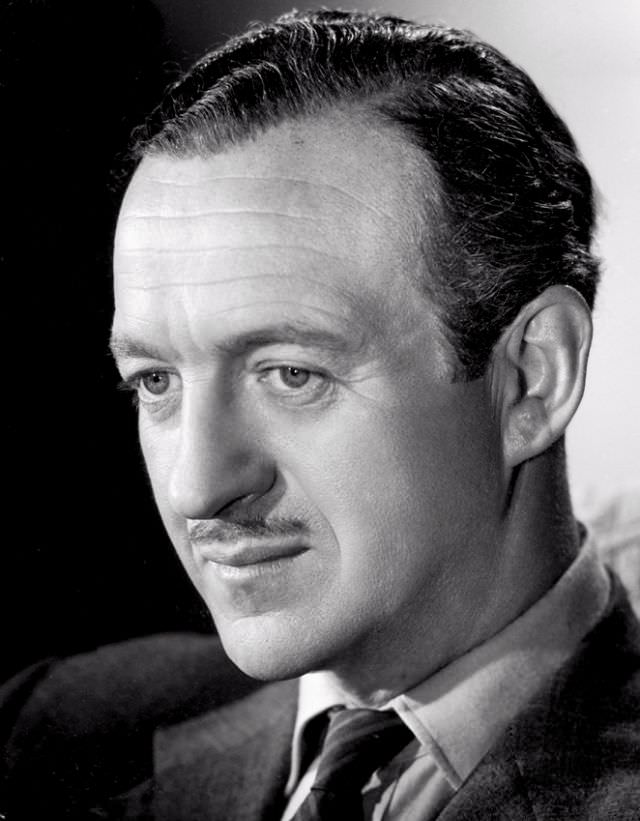
"I was following a modeling assignment one afternoon at my studio in Chelsea when David Niven arrived. Seeing all the gorgeous women reminded him of his early days modeling in New York. Niven was a great raconteur and he explained how he, Erroll Flynn and two other out-of-work actors decided to form a modeling team with a difference. On the occasions they found work, they noticed how the photographers would exploit the session–with one quick change of scenery and some new props, a model was used for several different jobs while receiving just a single fee. The team decided that each of them were restricted to modeling one body part only, a quarter each–legs, torso, hands, head. Niven was given the first assignment. The job started as a straightforward trouser shot, but soon required him to hold a drink. 'Not my forte old chap,' he said, 'I'm left-handed and feel rather awkward–but do know just the man for the job.' Up popped Errol, to hold the glass, and hey presto, two models, twice the fee!"
#4 Diana Dors, 1955
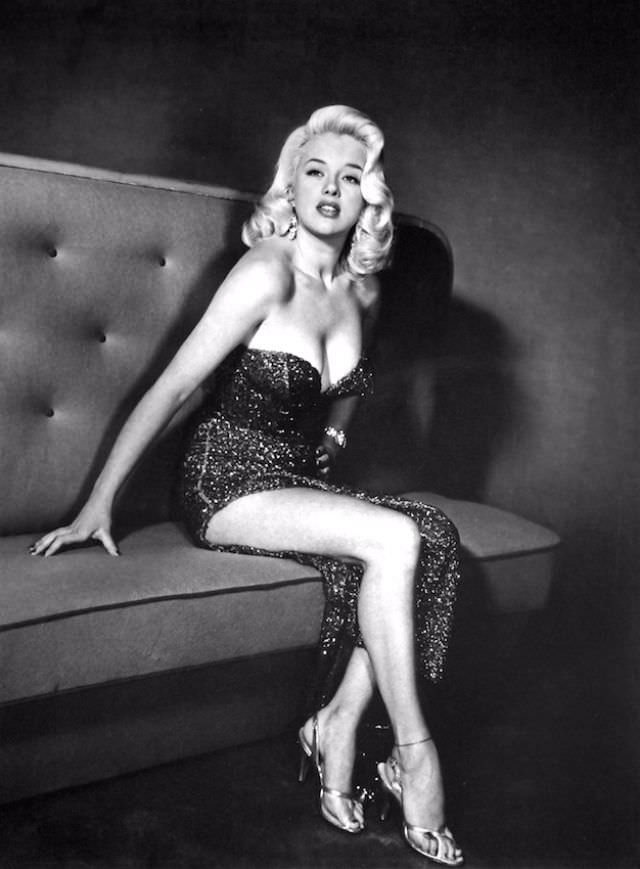
"Best known as the British Marilyn, Dors was a tremendous self-publicist. One occasion during the Venice film festival she approached me and mysteriously told me that I should get myself in position with my camera at the lido and await her appearance. A while later, the sea of boats parted and I saw Diana approaching on a gondola wearing a thick, long coat in the sweltering heat! Suddenly she dropped the coat to reveal an extraordinary mink bikini. This was very risqué at that time and the next day my photograph was on the front page of newspapers around the world."
#5 Gene Tierney, 1952
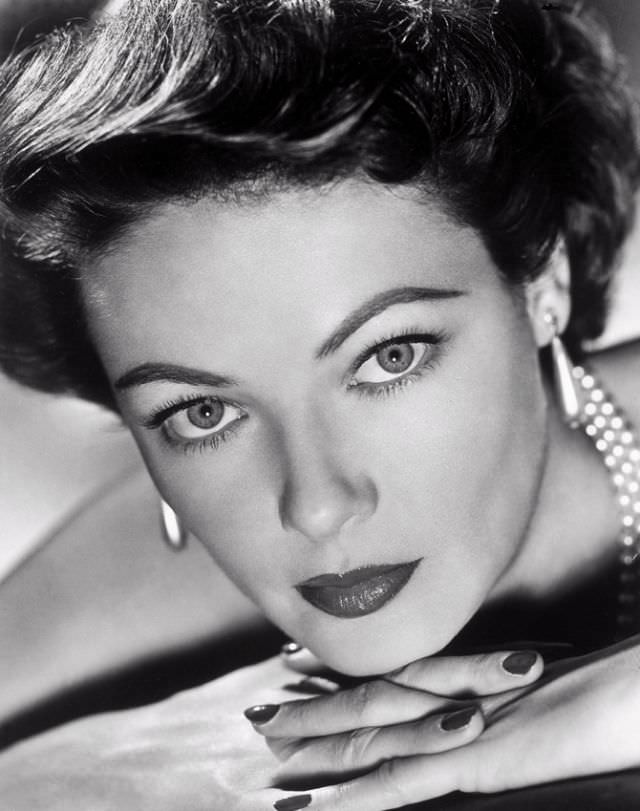
"I first saw Gene Tierney in Preminger’s film, Laura, in 1944. A classic romance, full of passion, obsession and jealousy. Her performance and appearance was electrifying and her heart-shaped face had an astonishing impact in close-up as you can see from her portrait. She will always be remembered as a great beauty."
#6 Lauren Bacall, 1958
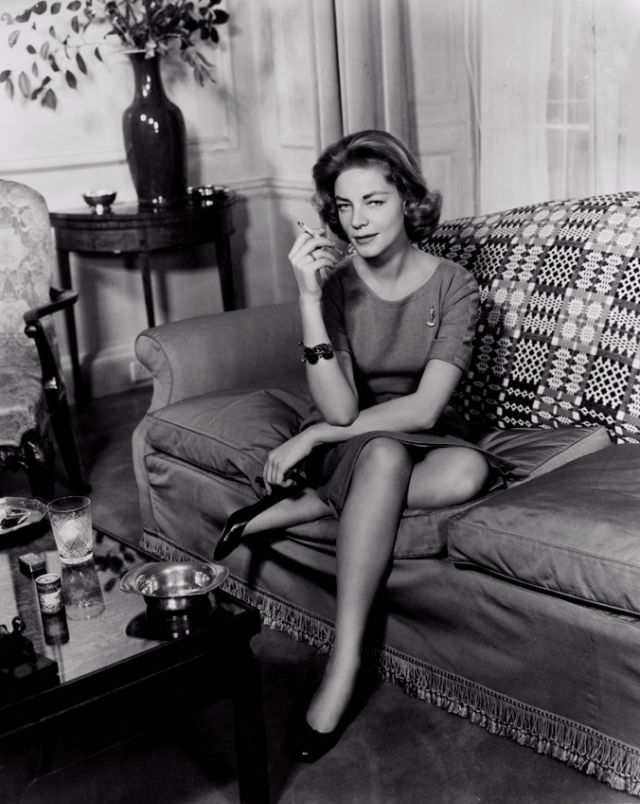
"20th Century Fox asked me to shoot her. I went to her flat and was greeted at the door by her maid who said 'oh yes she has been waiting for her passport picture to be taken for a week now.' I said, 'I’m not a passport photographer, I’m from the film company and I’m here to take her portrait!' This is the photo you see before you now."
#7 Gregory Peck, 1957
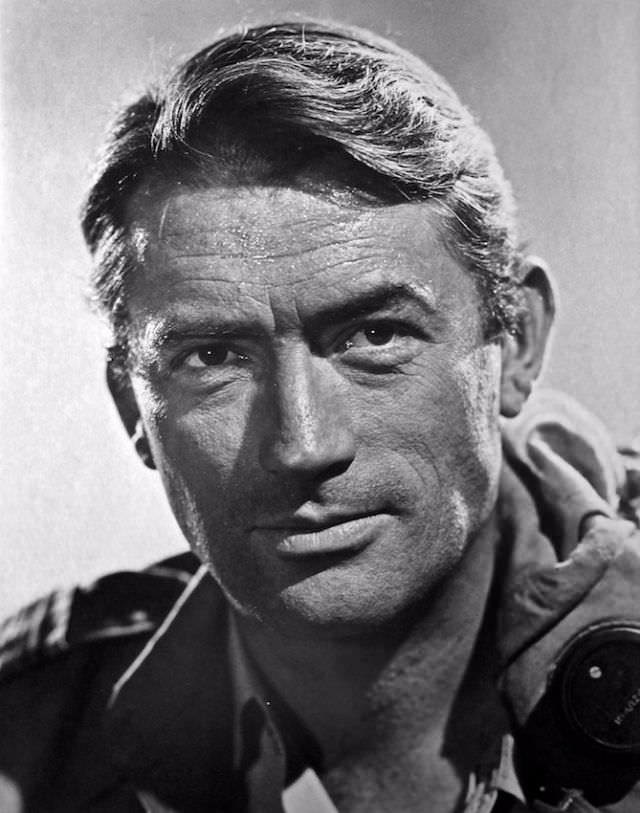
"Gregory Peck was quite simply the most handsome of all the film stars I photographed. However, as handsome as he was, he was shy and nervous when it came to being photographed. It was on these occasions my prop man Ernie was a great help, making Peck smile and feel at ease in front of the camera, by calling him 'Guv’nor,' offering him lots of cups of 'cha' and telling endless Cockney jokes."
#8 Brigitte Bardot, 1955
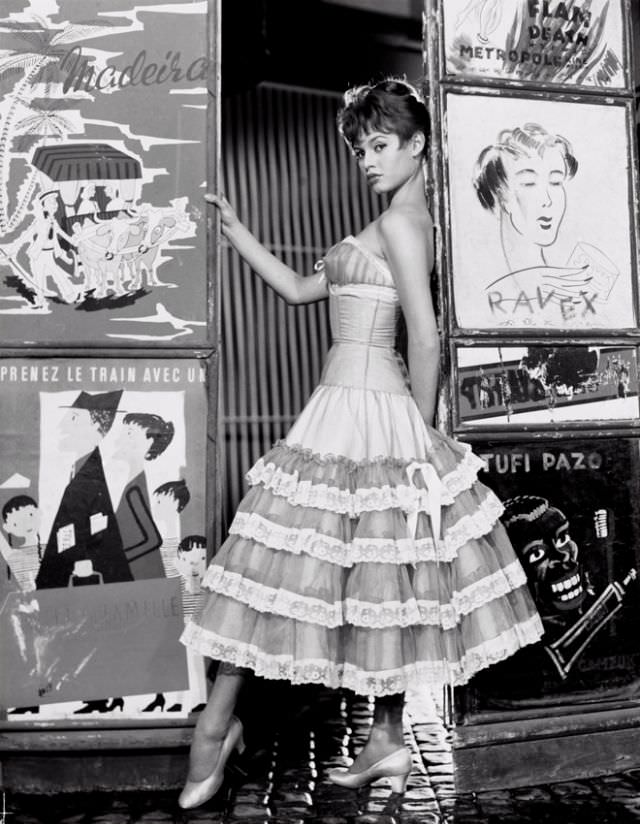
"In 1955 at the Pool Studio in Pinewood Studios, I photographed Brigitte Bardot. She was a shy, timid 21 year old who was going through her divorce from the French film director Roger Vadim. Bardot very nearly cancelled the photo shoot, as she was desperately homesick. I prevailed however, assured her it wouldn't take long and, on the advice of her publicity director, ordered a bottle of champagne. She was absolutely beautiful and gained more confidence as the shoot went on, aided by the champagne, and started to play-up for the camera. As beautiful as Bardot was, she was self conscious of her slightly buck teeth and, during the shoot often held her wrist up to her mouth to try and hide them. This action was similar to how cats use their paws to drink milk and, while watching her do this, Bardot's publicist announced, 'she is like a sex-kitten,' This was a nickname that stuck with Bardot throughout her career."
#9 Kay Kendall, 1952
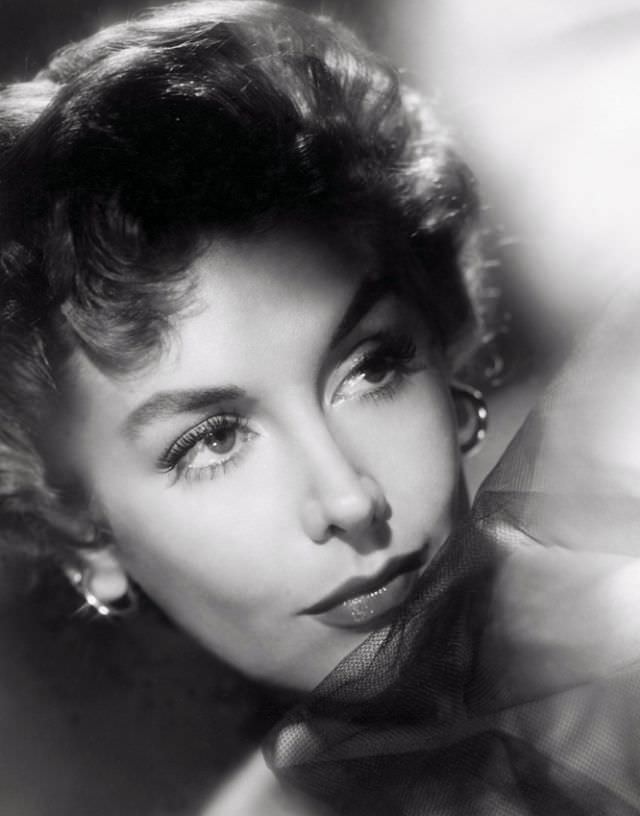
"Kay was afraid of the 10 x 8 camera. She was paranoid about her long nose. So one day I spoke to Dirk Bogarde and asked him to tell her that I had bought a new fore shortening lens from America, which would work wonders on her nose. He passed on the information and she agreed to have her portrait taken. She loved the photos, but little did she know that I had no such lens and just used my ordinary lens! She loved them so much she took one of the shots as a reference for her surgeon!"
#10 Joan Collins, 1952
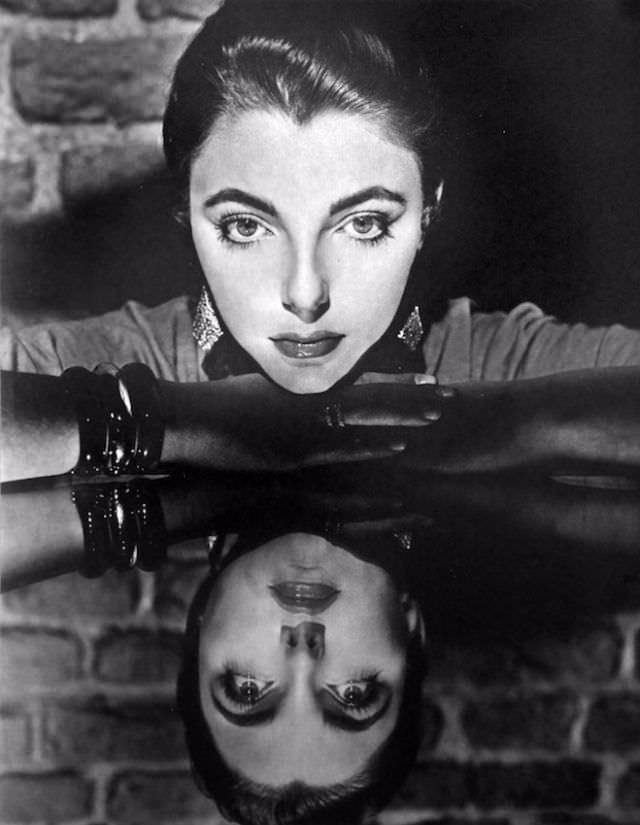
"I first photographed Joan Collins for the Italian director Renato Castellani whilst casting for his movie 'Romeo and Juliet.' I went to his Baker Street flat where I was given one flash light and a simple backdrop with which to shoot Collins. She arrived with hair and make-up ready prepared for her beauty shot. However, Castellani wanted a natural beauty shot and asked me to tell her to remove all her makeup and to pull her hair back into a bun. I asked Collins this and she ran into the bathroom in floods of tears. When she arrived back she looked absolutely stunning, a true natural beauty. Unfortunately, she didn’t get the role of Juliet, but went on to be a huge success nevertheless."
#11 Jean Simmons, 1948
#12 Yvonne De Carlo, 1954
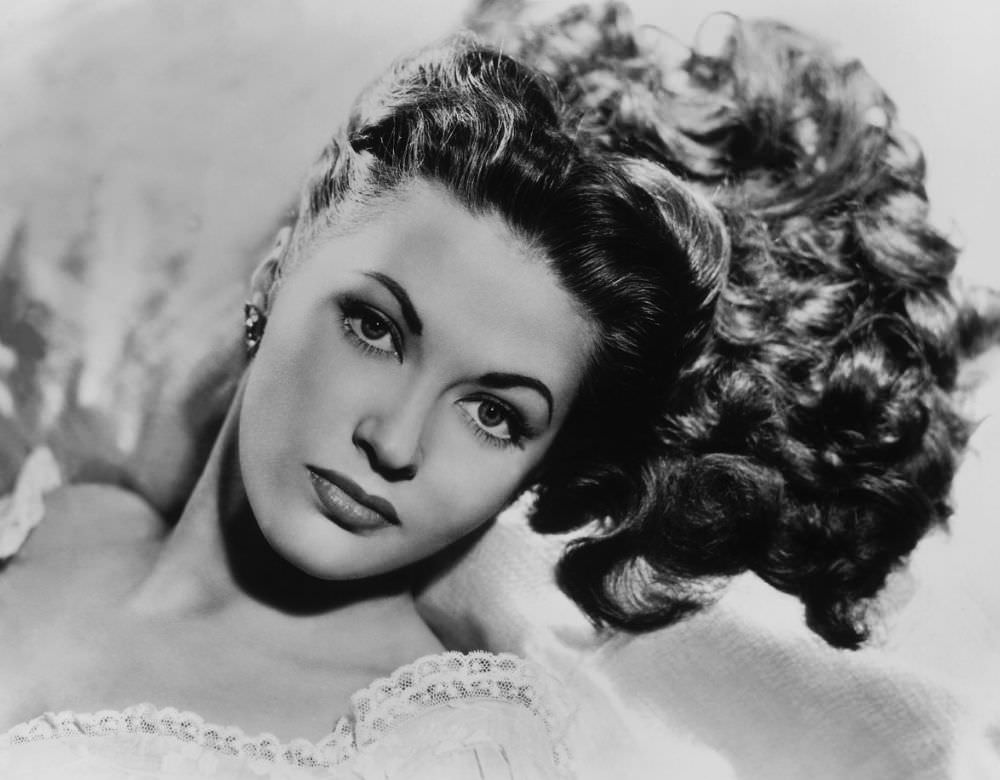
"After one of our sessions together, I asked Yvonne if she could give me a lift back into London. On the way back into town, I suggested that we should should have dinner together some time. 'There’s no time like the present,' she replied. I suddenly realised that I only had two shillings and sixpence in my pocket. Thinking quickly, I said that I wasn’t actually that hungry and maybe we should just grab a bite at the Lyons Corner House which was near to her apartment in Park Lane. After sandwiches and coffee, I walked her home and was pleased indeed when she said that she had just had her most enjoyable meal in London so far."


